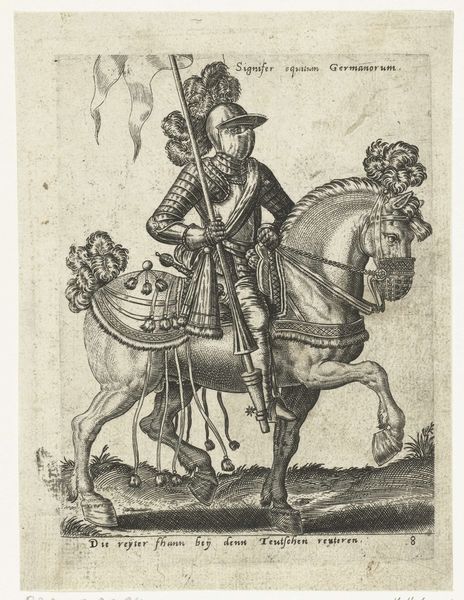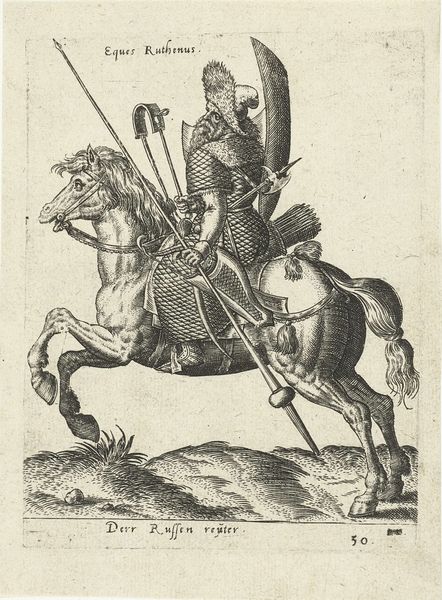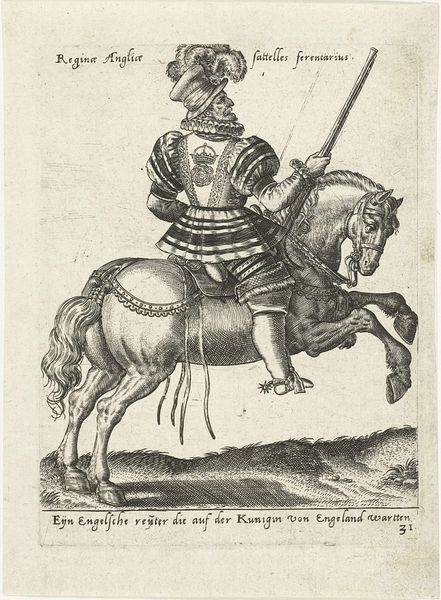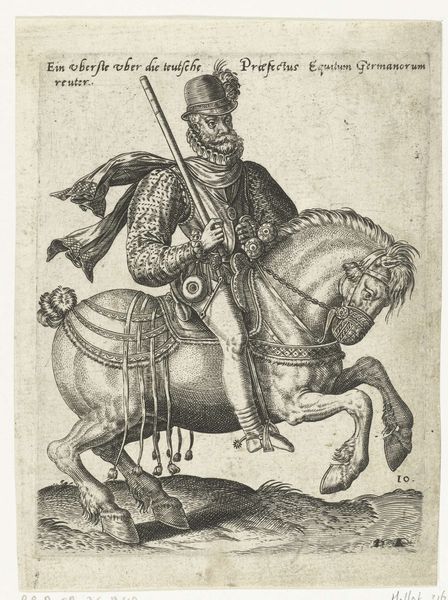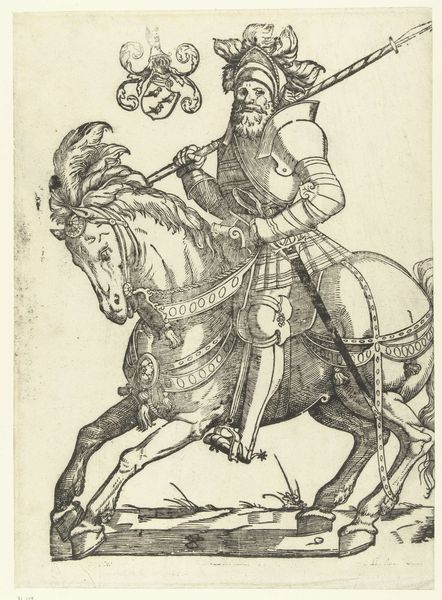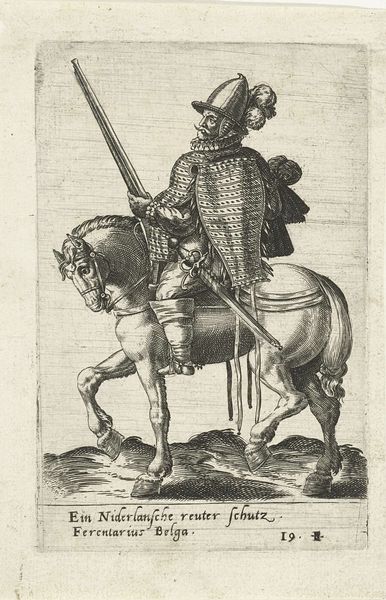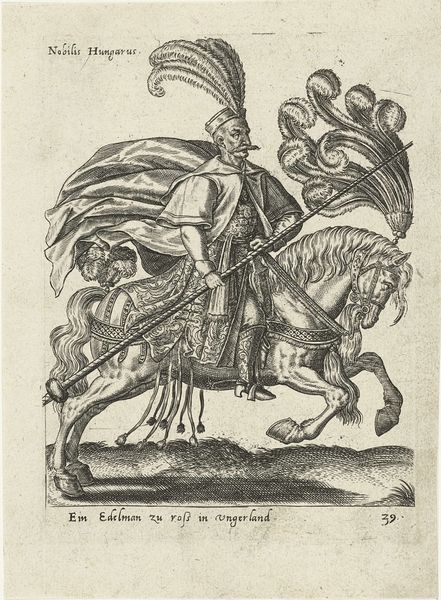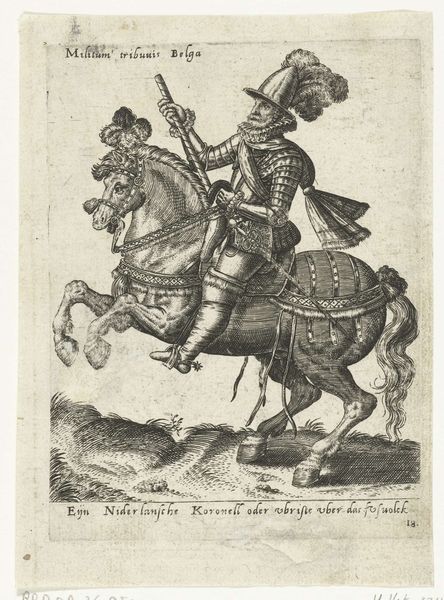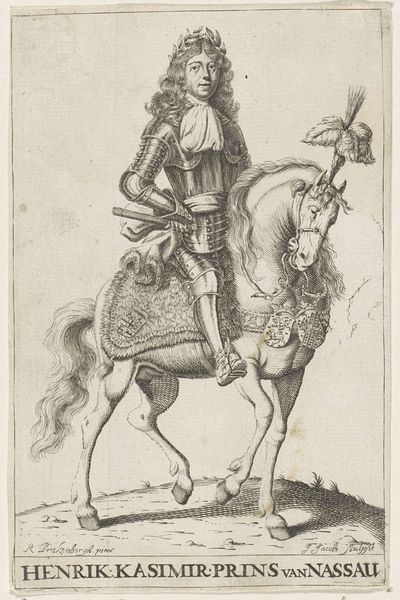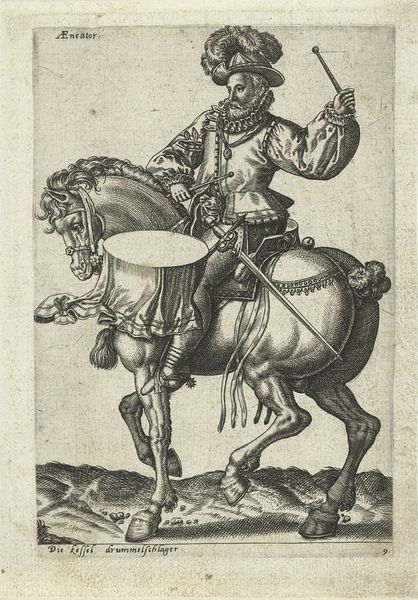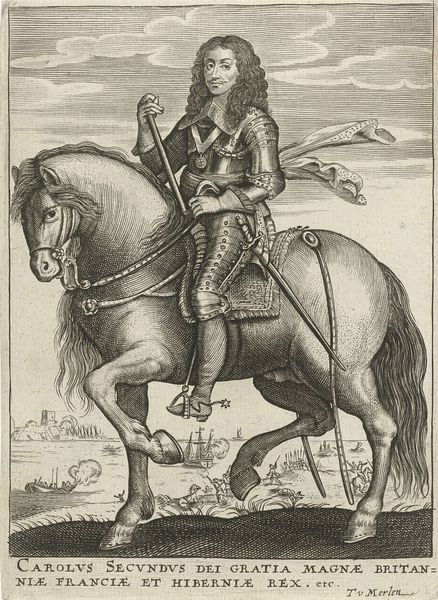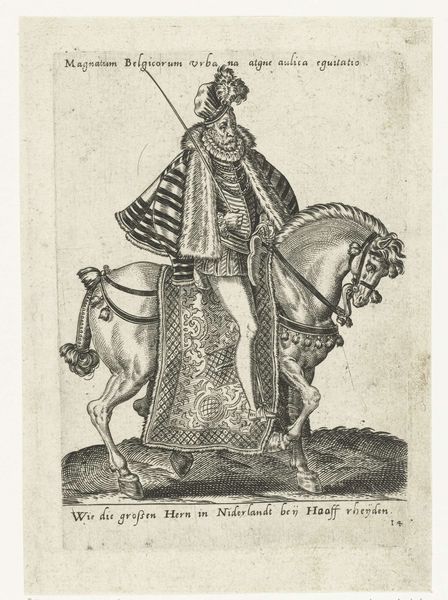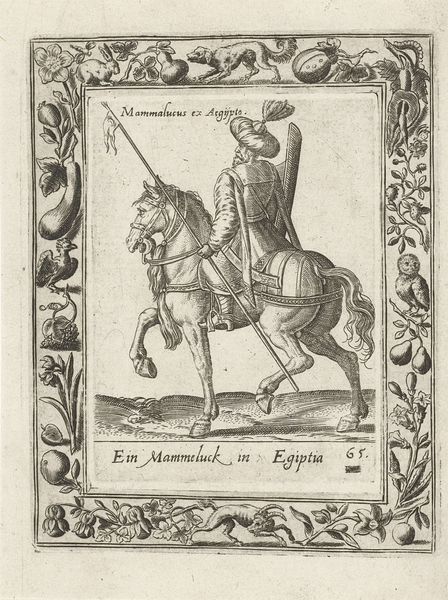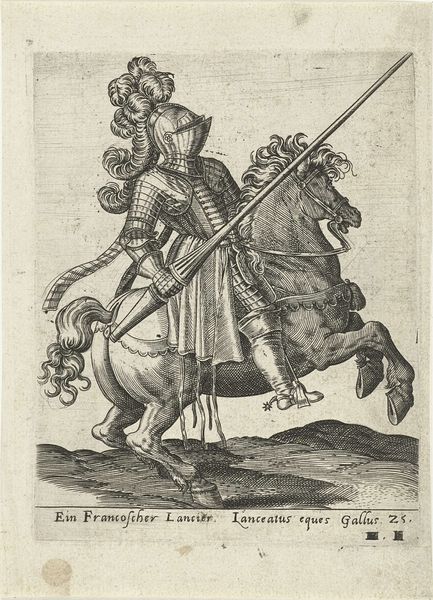
print, intaglio, engraving
#
portrait
#
medieval
# print
#
pen sketch
#
intaglio
#
old engraving style
#
mannerism
#
figuration
#
history-painting
#
engraving
Dimensions: height 154 mm, width 105 mm
Copyright: Rijks Museum: Open Domain
Curator: Allow me to introduce "Avonturier te paard" or "Adventurer on Horseback", an intaglio print by Abraham de Bruyn, created around 1577 and held here at the Rijksmuseum. Editor: Well, my immediate reaction is... intriguing. The textures are what grab me – the horse's coat, the rider's fur. It feels almost tactile, despite being an engraving. And what about that caption text that has been added? It refers to someone described as the "Wach hals" (watch neck) or adventurer 'Delli.' Curator: It's a rich tableau of symbolism. The rider's garb, the feathered adornments... consider the visual language here. Those wings evoke Hermes, or perhaps an angelic protector. But the overall impression is one of earthly adventure, rather than divine flight. There is even some Roman script in the top corner "E Mifsarius". Editor: I'm curious about the practical aspects. Intaglio, specifically. The process of etching and then printing demands a certain kind of labor, a very deliberate crafting of each line. What kind of press was used? Who might have been commissioning and consuming prints like this? Was it meant to be a mass-produced artwork that could reach a larger and thus diverse audience or remain something appreciated by few because it demanded time and specific material investments? Curator: Intriguing questions. The act of replication, then, becomes part of the symbolic layering. This image, made repeatable, gains currency as a signifier, a shared cultural touchstone about venturing into the unknown. It is part of a historic moment—perhaps evoking an understanding of freedom to seek opportunities and power—or perhaps tied to cultural expressions such as dress styles as worn by Ottoman guards and warriors called "Deli". Editor: Yes! It points toward how this single print participates in a much larger sphere. It isn’t only the image itself, but all the processes around production and its consumption. Curator: Absolutely, the layers build on each other. So as we consider that this artwork—though small, existing here in print, carries significant emotional, historic and symbolic significance—allowing us insight into the spirit of a specific time. Editor: I agree—considering both production and context allows to look beyond this singular man and consider broader concepts such as enterprise, culture, materiality, class and accessibility. It serves as a document.
Comments
No comments
Be the first to comment and join the conversation on the ultimate creative platform.
